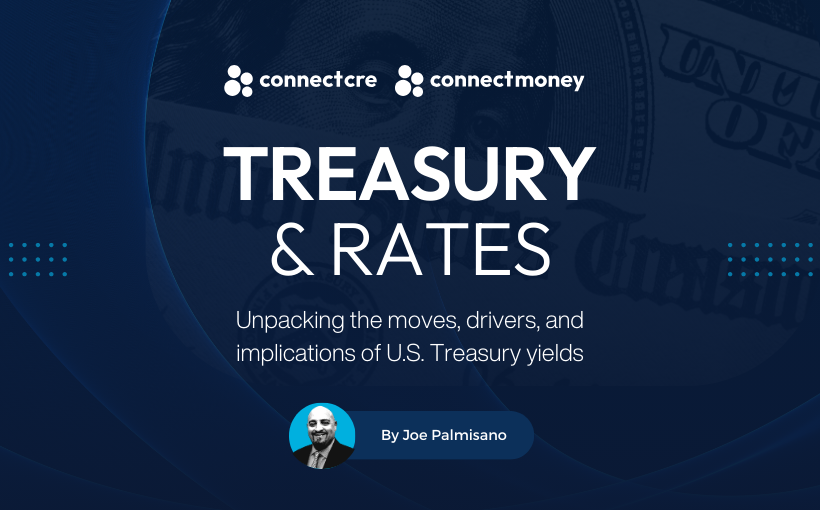**Treasury Market Whipsaws as Long-End Yields Tell the Tale**
U.S. Treasury yields have experienced significant volatility over the past two weeks, especially on the long end of the curve. The 30-year yield surged to a cycle high of 5.14% on May 22, fell back to 4.90% by last Friday, and climbed again to 5.00% on Monday. The 10-year yield followed a similar trajectory, reaching 4.60% before retreating to 4.40%. As of today, it’s trading near 4.42%.
On the shorter end of the curve, yields remain relatively stable. With the Federal Reserve holding steady on interest rates, no changes are expected until at least the fourth quarter of 2025 or early 2026. This has kept the short end pinned to a tight range, with limited room for rates to rise further. The steepening of the U.S. yield curve persists, showing few signs of reversal in the near term.
So far in 2025, the U.S. 30-year yield has underperformed its peers, marking a rare divergence. While 2-, 5-, and 10-year yields have declined, long-bond yields have increased — a discrepancy not seen over a full calendar year since 2001. This reflects investor demand for greater compensation in exchange for holding long-duration government debt amid concerns about fiscal sustainability and inflation.
The initial sell-off in long-dated Treasuries was fueled by several factors: worries over escalating U.S. fiscal spending, weak global demand for long-duration assets, downward pressure from Japanese bonds, and a robust U.S. economic and labor market outlook. The subsequent rebound received a boost from a Japanese Ministry of Finance survey suggesting potential adjustments in long-term bond issuance. Additionally, CTA and macro fund flows have begun unwinding short positions in long-duration assets, aiding the rally. Still, systematic strategies remain neutral or slightly short, while dealer positioning is light, suggesting limited risk of a significant squeeze.
Recent technical resistance in Treasury yields triggered a wave of short-covering. Successful auctions — including $69 billion in 2-year notes, $70 billion in 5-year notes, and $44 billion in 7-year notes — also contributed to the market’s rally. Though long-end yields remain vulnerable to volatility, the recent stabilization has been welcomed by risk assets.
Looking ahead, barring disruptive trade policy developments like shifts in tariffs, Treasury duration may trade in a narrower range than observed in late April. On the front end, rates will likely remain in a holding pattern until the May nonfarm payrolls report is released. While a June rate cut appears unlikely, weaker labor data — particularly a print under 50,000 jobs or a rise in unemployment to 4.4% — could revive rate-cut discussions for later this year or early 2026.
For now, a range of 4.75% to 5.00% for the 30-year yield and 4.25% to 4.50% for the 10-year yield seems reasonable. A sustained rally, however, would likely require fiscal discipline, regulatory adjustments, or Treasury buyback operations. Conversely, a budget that increases the deficit could reignite pressure on long-dated yields.
Funding conditions could tighten if the U.S. debt ceiling is lifted—potentially by as much as $4 trillion—which would increase Treasury bill issuance and draw down reserve balances. Without offsetting measures such as Federal Reserve reserve injections, increased issuance could widen spreads and raise repo rates. Swap spreads remain elevated, with the 10-year swap spread near +55 basis points, reflecting balance sheet constraints and an absence of Treasury buybacks.
The Fed’s overnight reverse repo facility, currently absorbing $400 billion to $500 billion in excess reserves, offers a buffer. However, new Treasury bill supply following a debt ceiling resolution could drain reserves, potentially tightening repo markets and funding conditions by Q3 or Q4.
If Treasury bill issuance rises by $500 billion to $700 billion without Fed counteraction, it could further pressure the banking system. Repo rates would likely increase within the Fed’s target range and liquidity concerns could emerge, especially for off-the-run Treasuries.
A range-bound market seems likely in the near term, but evolving fiscal and labor conditions will remain key drivers for what comes next in the Treasury landscape.




